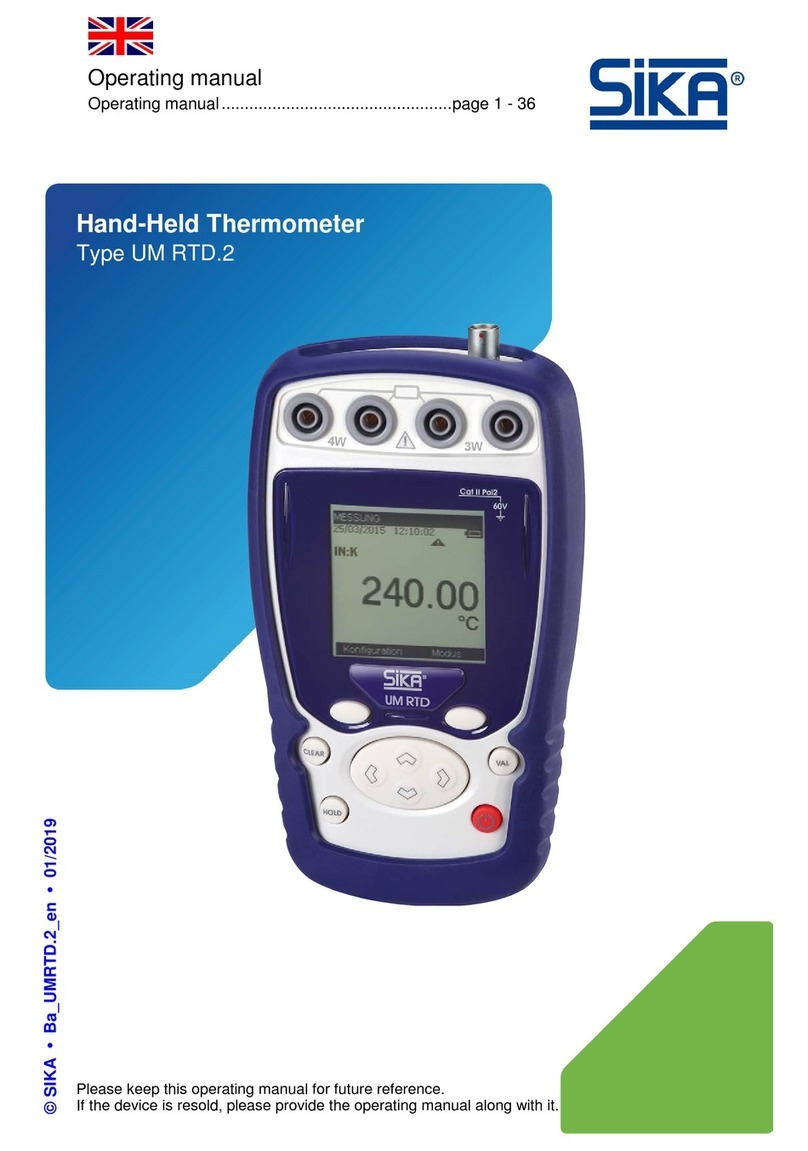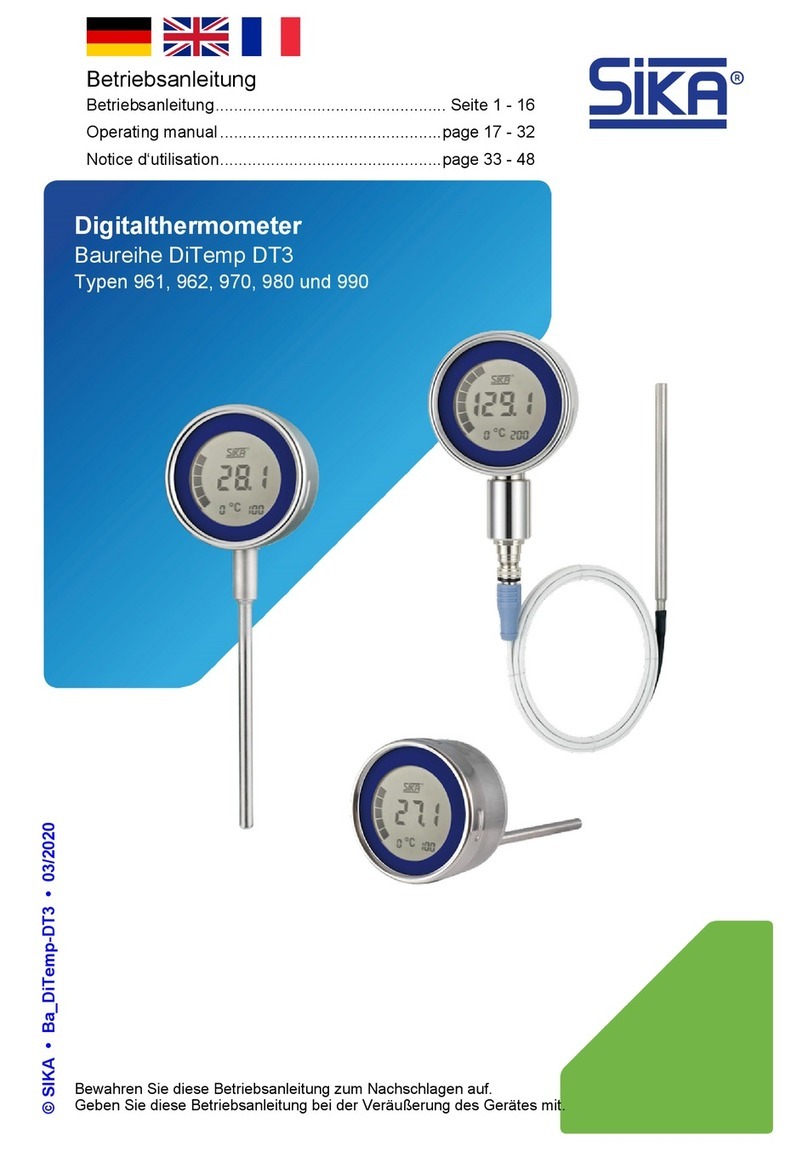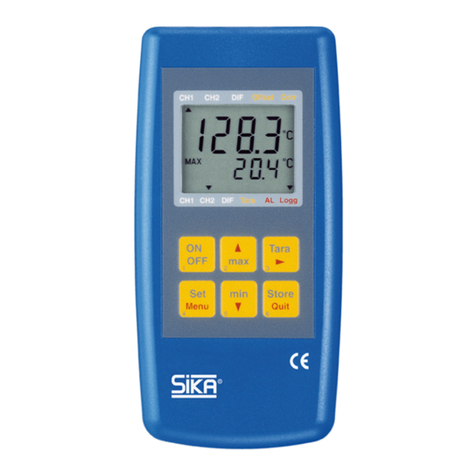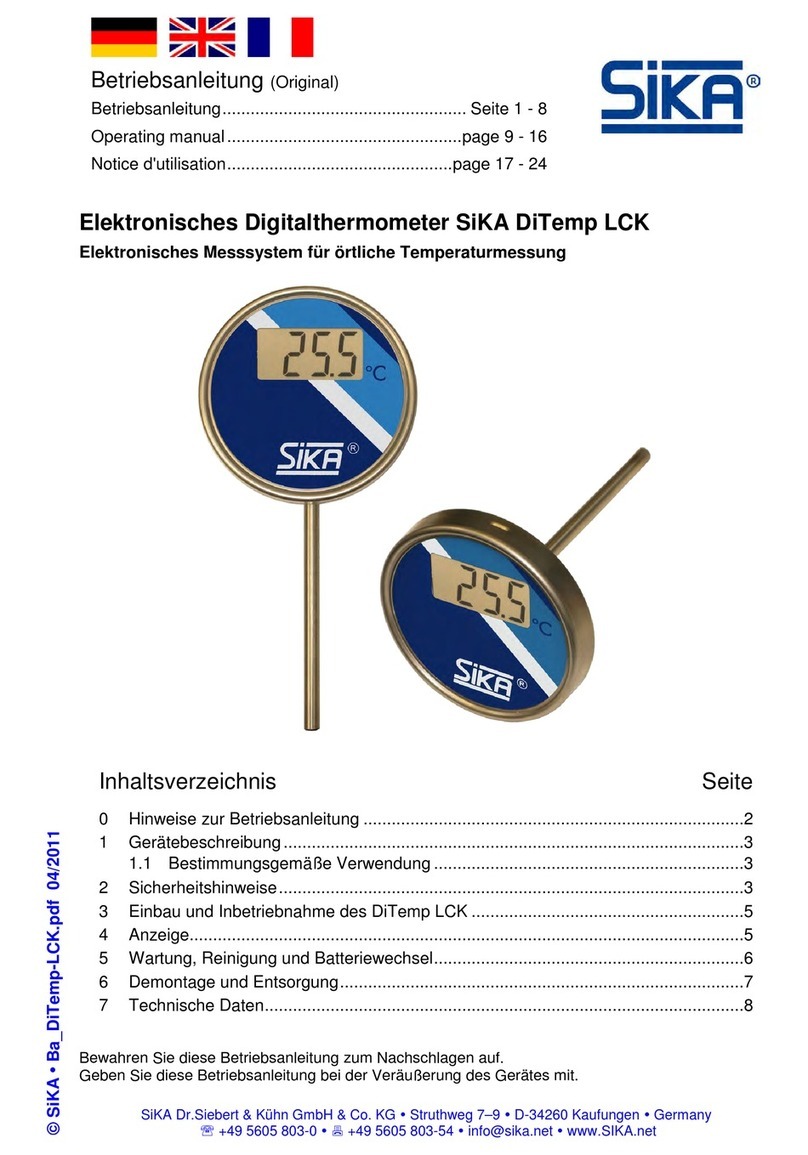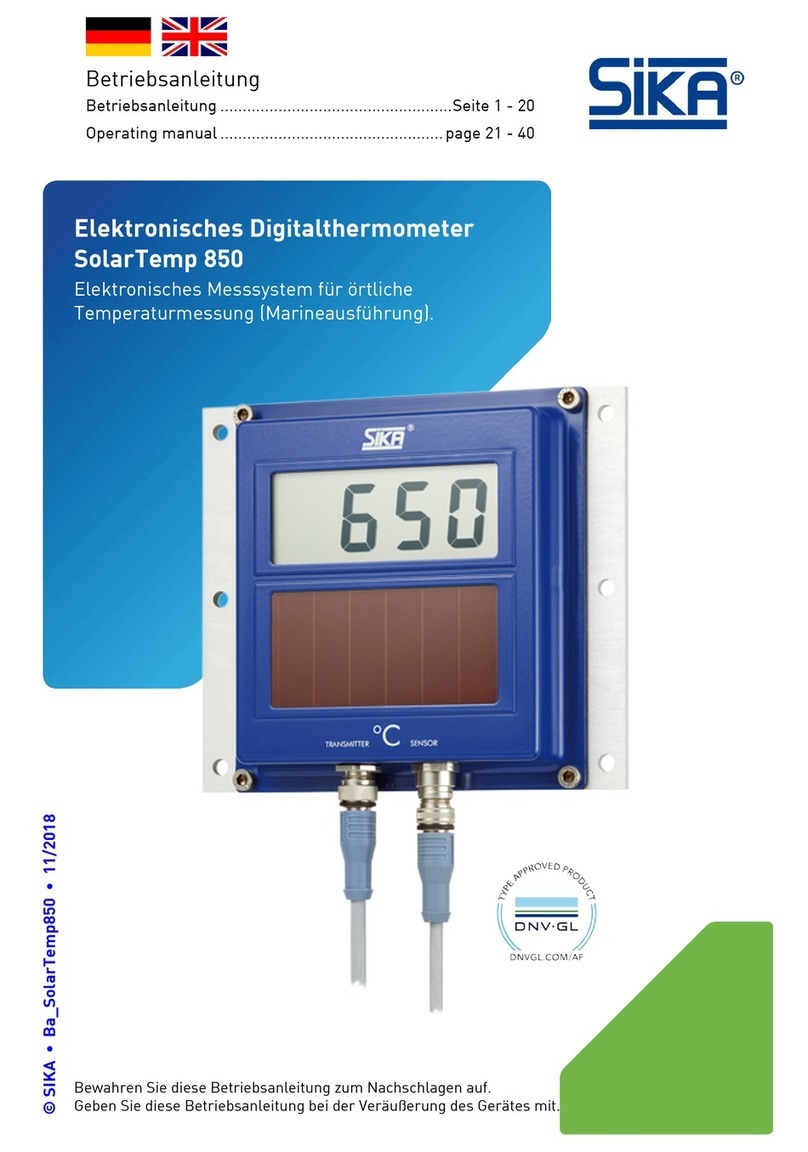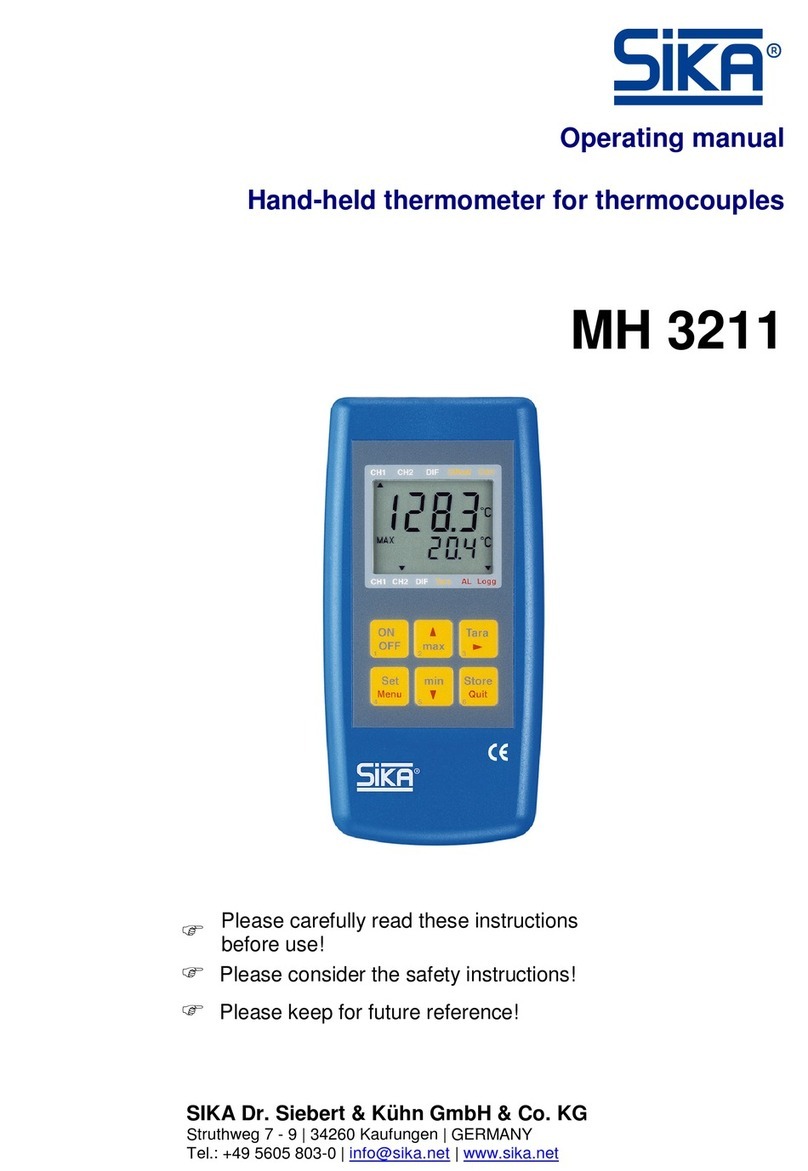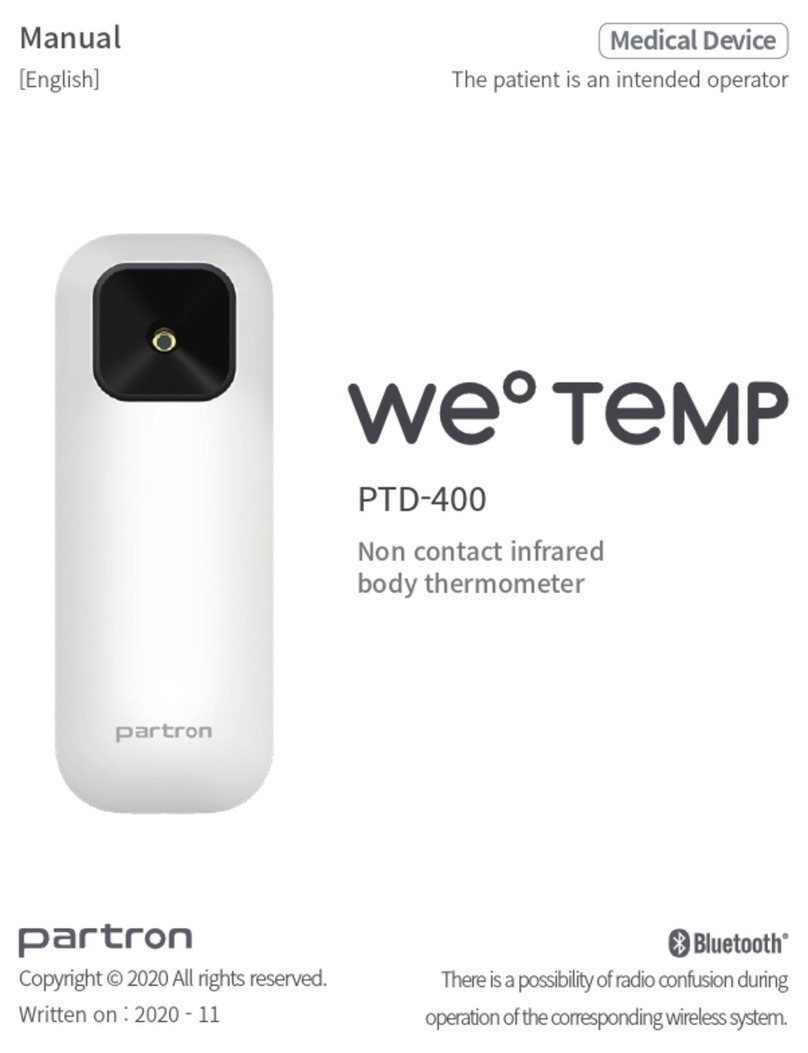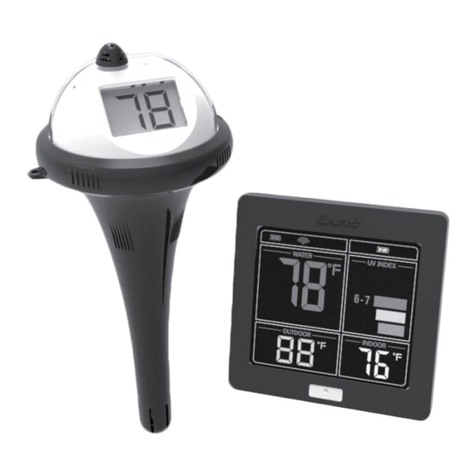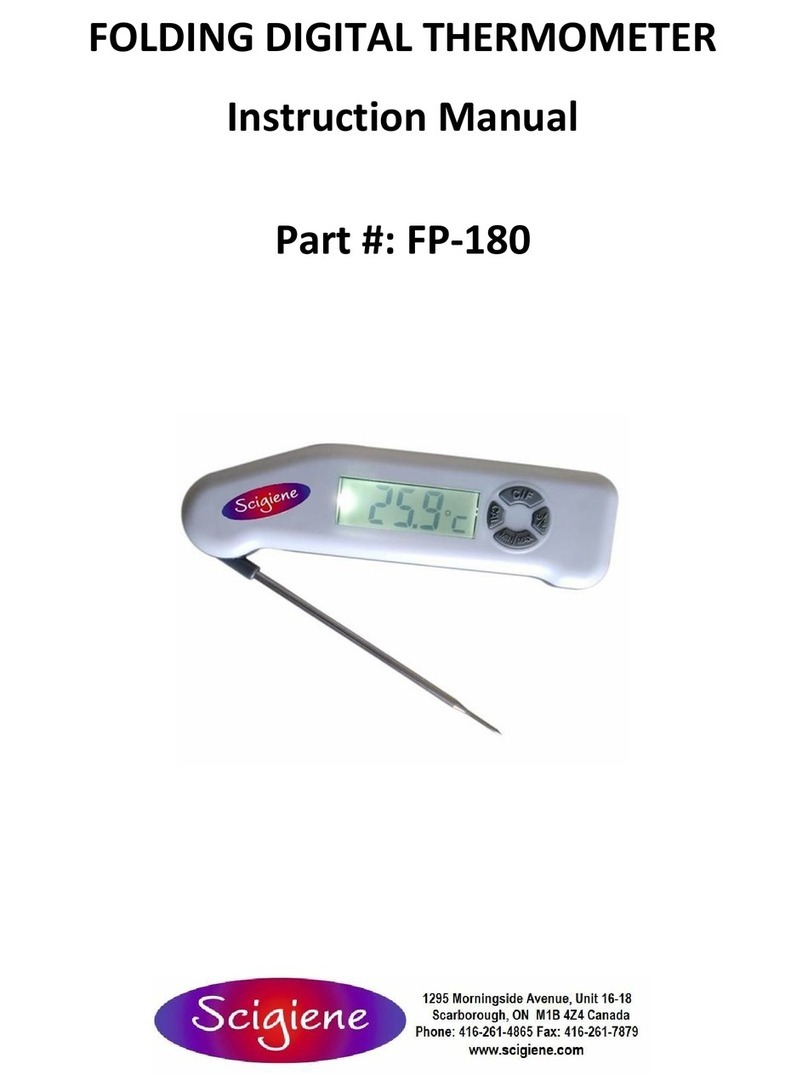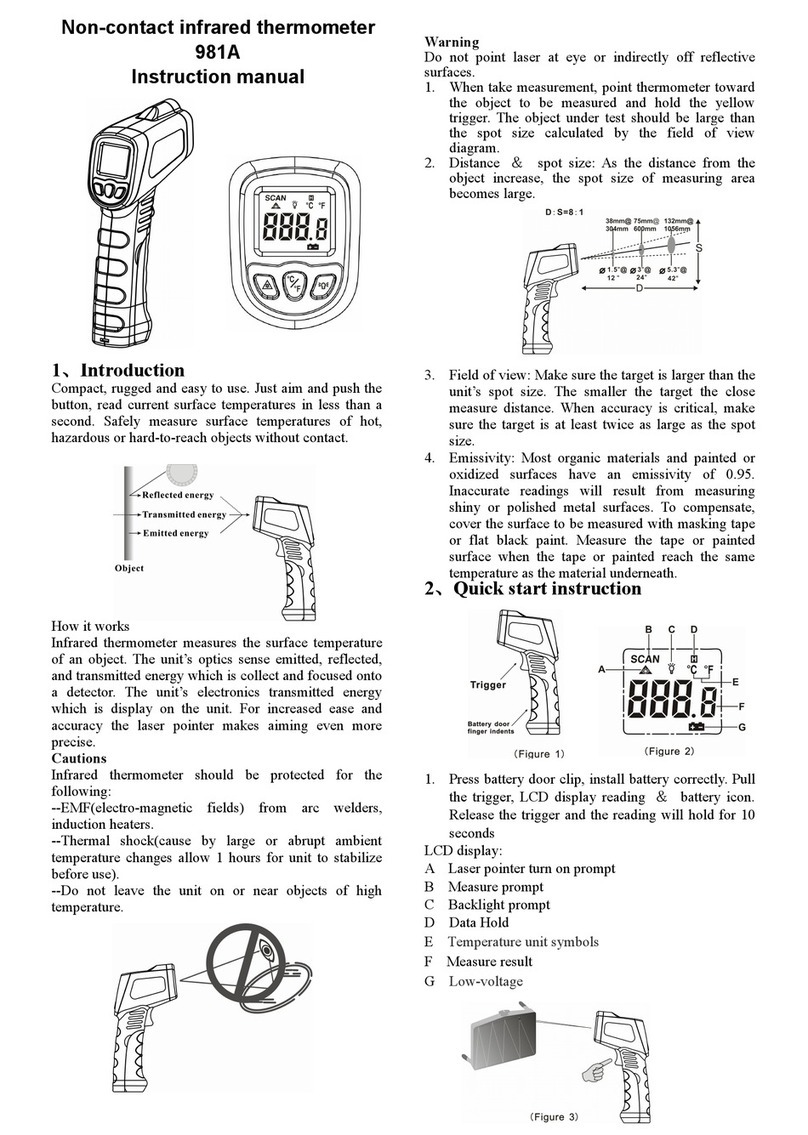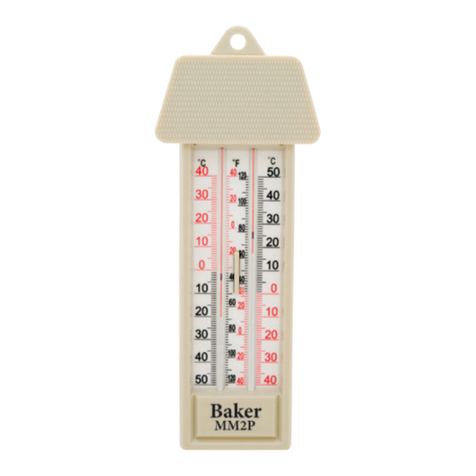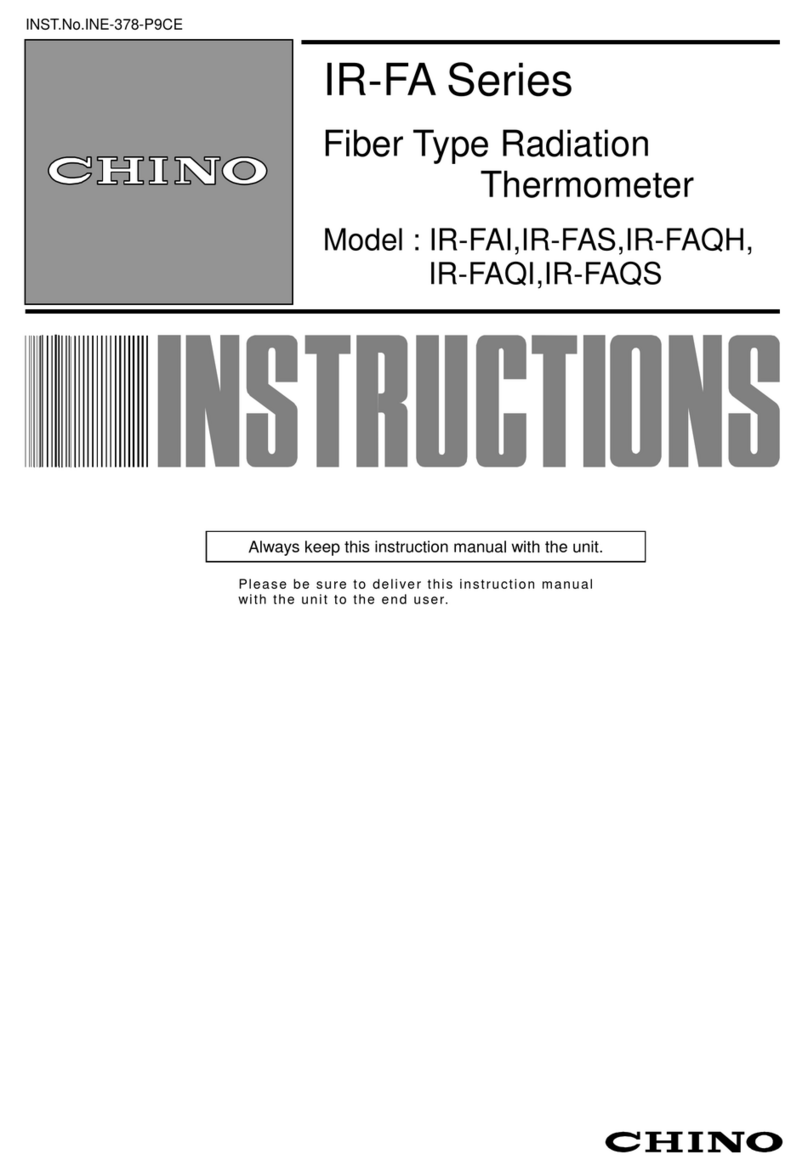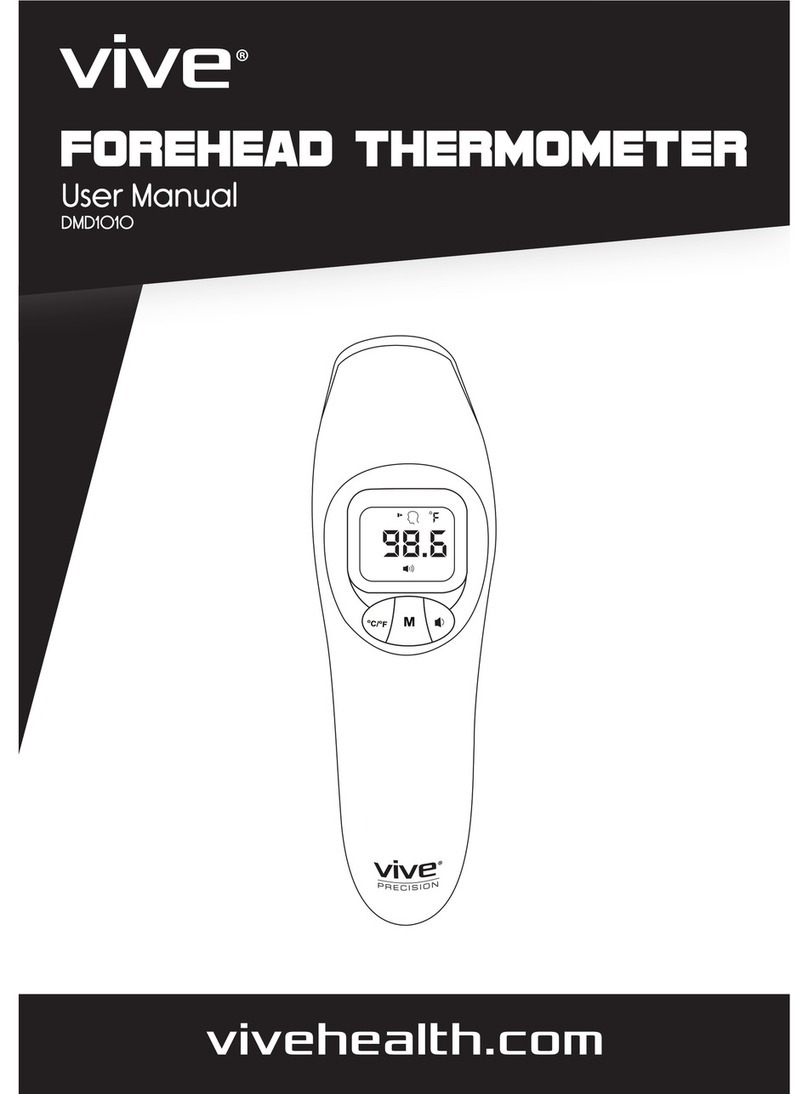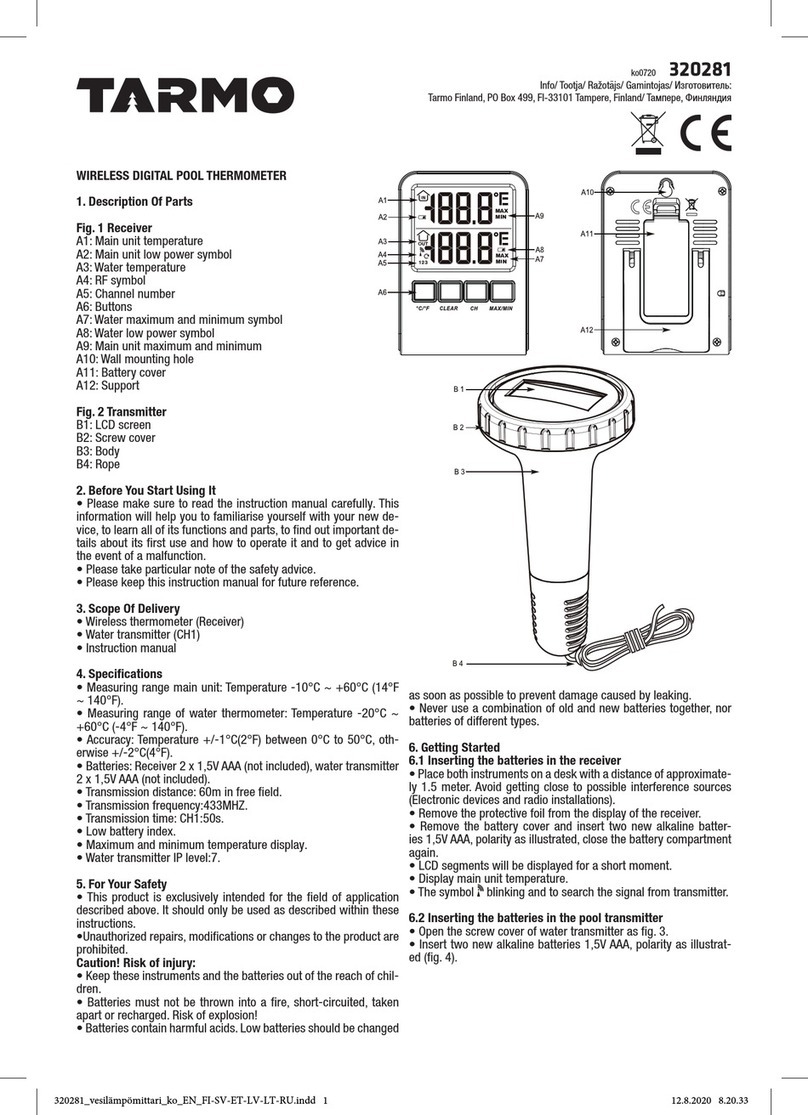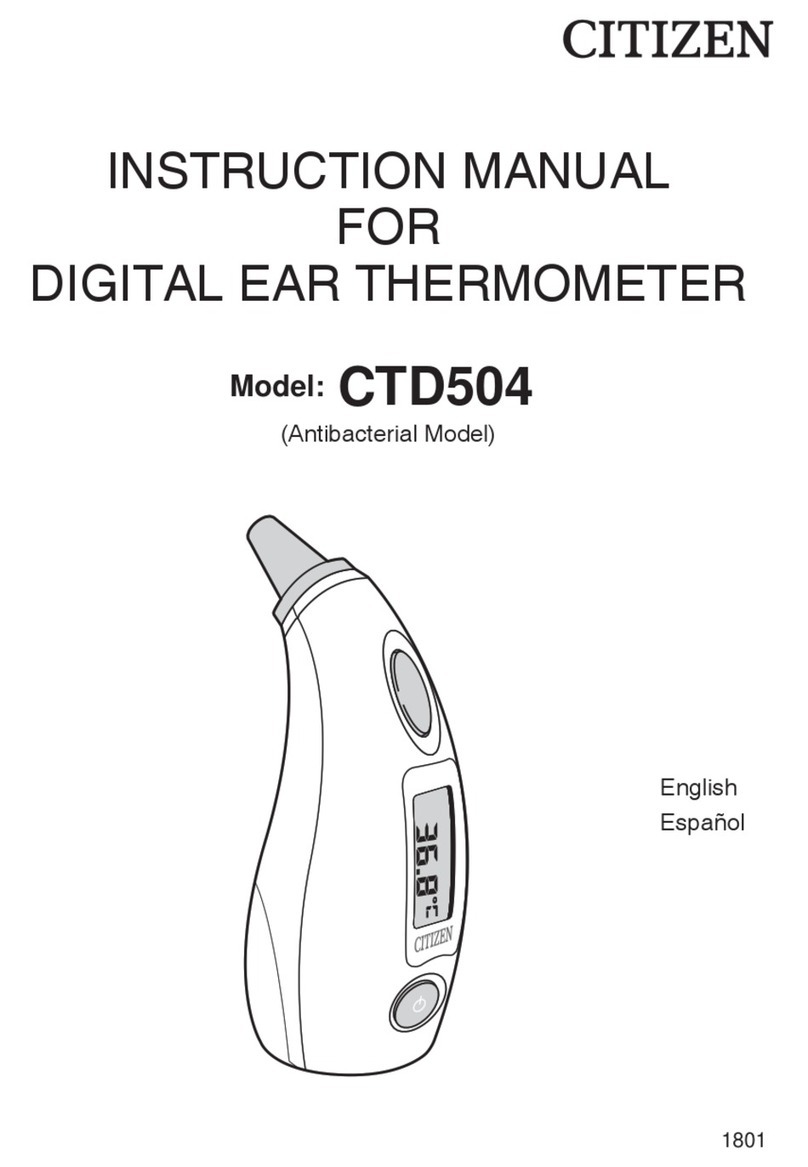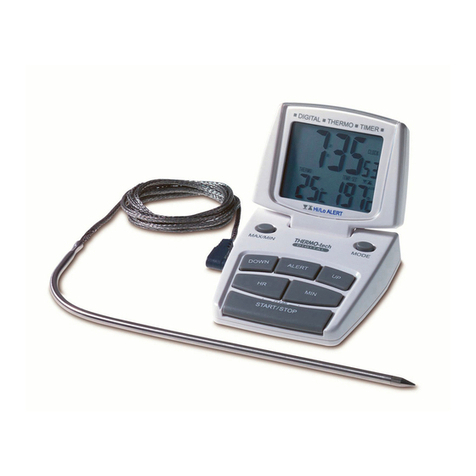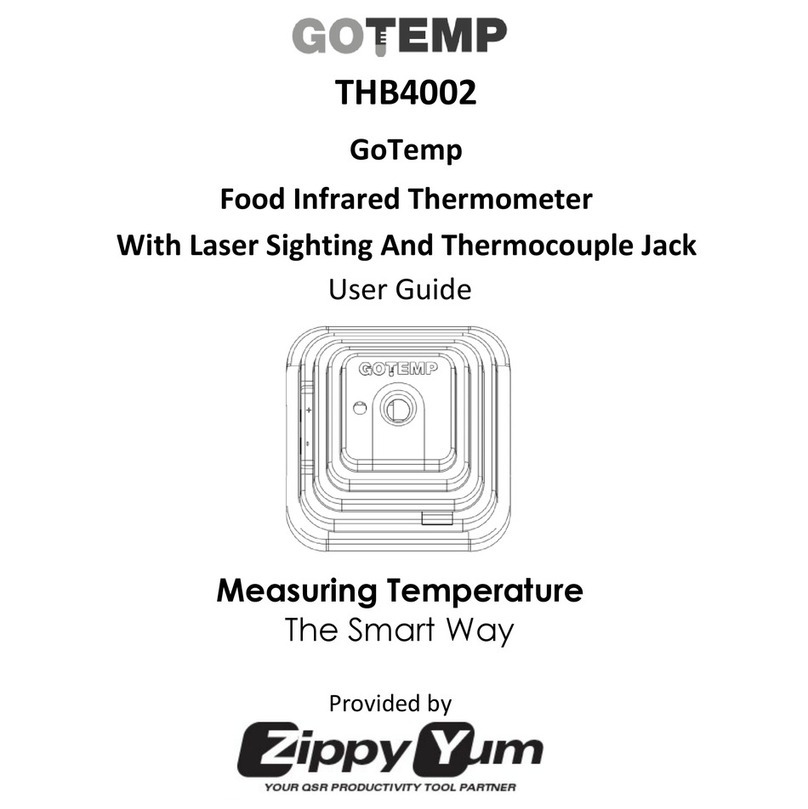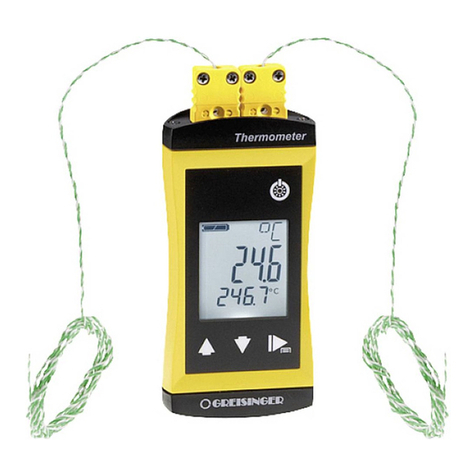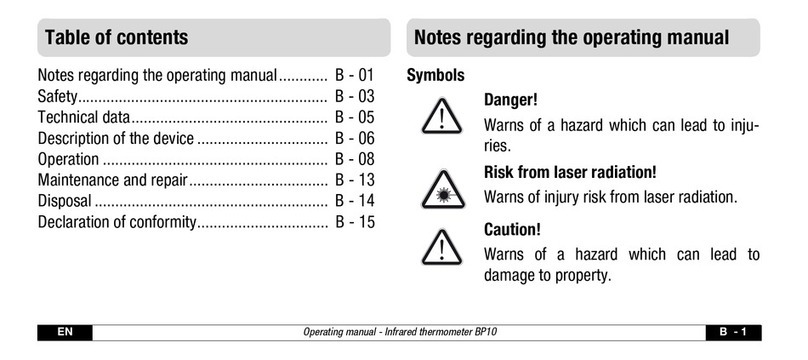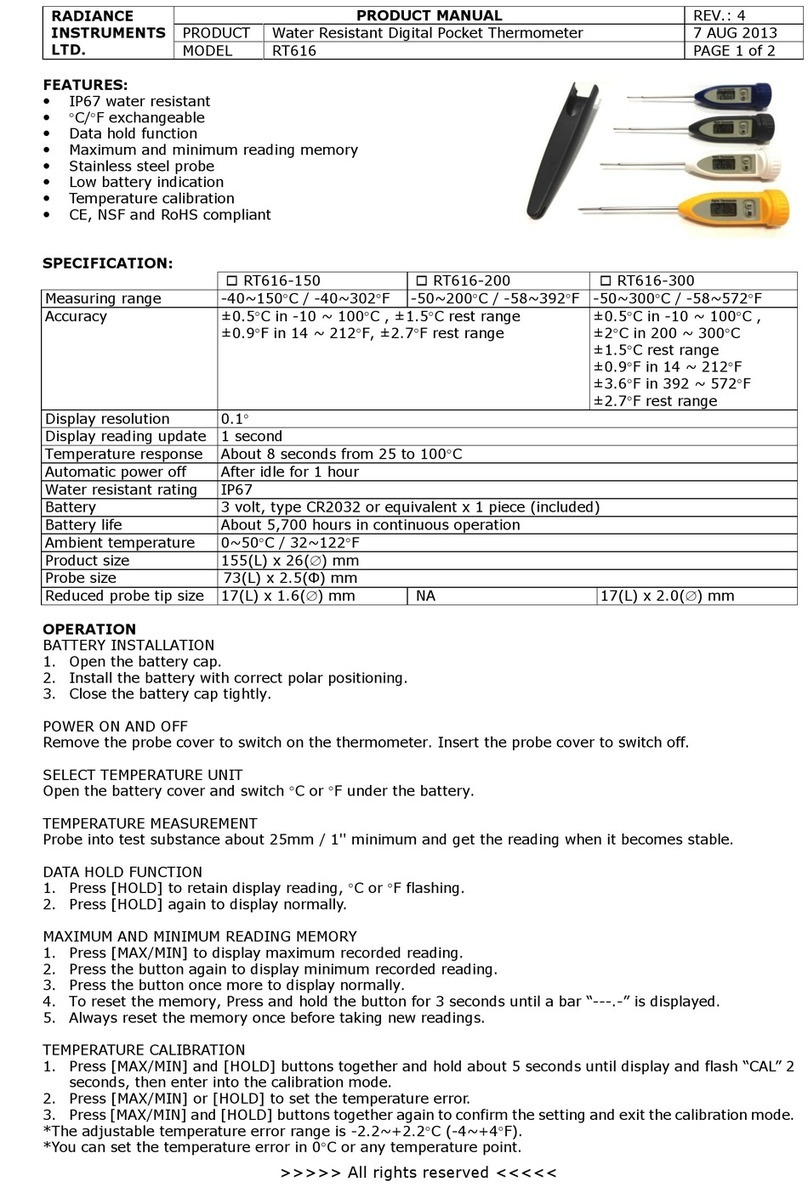
Bimetall-Zeigerthermometer
- 2 - © SIKA •Ba_ZT-BiMe •01/2015
Inhaltsverzeichnis Seite
0Allgemeines...................................................................................................................2
1Sicherheitshinweise ......................................................................................................3
2Beschreibung und Einsatz ............................................................................................3
3Technische Daten..........................................................................................................3
4Installation.....................................................................................................................4
5Bedienung......................................................................................................................6
6Wartung und Reparatur ................................................................................................7
7Außerbetriebnahme ......................................................................................................7
8Entsorgung ....................................................................................................................7
0Allgemeines
Bitte lesen Sie diese Betriebsanleitung vor der Inbetriebnahme des Gerätes.
Unsere Bimetall-Zeigerthermometer für industrielle Temperaturmessung werden in Über-
einstimmung mit der Norm DIN EN 13190 gefertigt.
Unsere Bimetall-Zeigerthermometer eignen sich zum Messen der Temperatur in Flüssigkei-
ten oder Gasen.
Verwendungen, die nicht ausdrücklich als bestimmungsgemäß aufgeführt werden,
sind bestimmungswidrig!
SIKA Dr. Siebert & Kühn GmbH & Co KG übernimmt keine Haftung für Schäden, die aus dem
unsachgemäßen Gebrauch des Gerätes bzw. durch Nichtbeachten der in dieser Betriebsan-
leitung enthaltenen Informationen entstehen.
Sollten Sie Probleme oder Fragen haben, wenden Sie sich an Ihren Lieferanten oder direkt
an:
Dr. Siebert & Kühn GmbH & Co. KG
Struthweg 7-9 • D - 34260 Kaufungen
05605-803 0 • 05605-803 54
info@sika.net • www.sika.net
Weitergabe sowie Vervielfältigung dieser Betriebsanleitung, Verwertung und Mitteilung seines Inhalts
sind verboten, soweit nicht ausdrücklich gestattet. Zuwiderhandlungen verpflichten zu Schadenersatz.
Alle Rechte für den Fall der Patent
-, Gebrauchsmuster- oder Geschmacksmustereintragung vorbe-
